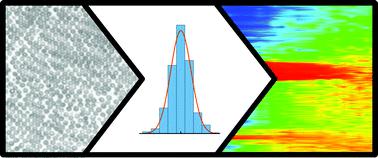当前位置:
X-MOL 学术
›
Faraday Discuss.
›
论文详情
Our official English website, www.x-mol.net, welcomes your
feedback! (Note: you will need to create a separate account there.)
Optical costs and benefits of disorder in biological photonic crystals
Faraday Discussions ( IF 3.3 ) Pub Date : 2020-09-09 , DOI: 10.1039/d0fd00101e Sébastien R Mouchet 1 , Stephen Luke 2 , Luke T McDonald 2 , Pete Vukusic 2
Faraday Discussions ( IF 3.3 ) Pub Date : 2020-09-09 , DOI: 10.1039/d0fd00101e Sébastien R Mouchet 1 , Stephen Luke 2 , Luke T McDonald 2 , Pete Vukusic 2
Affiliation

|
Photonic structures in ordered, quasi-ordered or disordered forms have evolved across many different animal and plant systems. They can produce complex and often functional optical responses through coherent and incoherent scattering processes, often too, in combination with broadband or narrowband absorbing pigmentation. Interestingly, these systems appear highly tolerant of faults in their photonic structures, with imperfections in their structural order appearing not to impact, discernibly, the systems’ optical signatures. The extent to which any such biological system deviates from presenting perfect structural order can dictate the optical properties of that system and, thereby, the optical properties that system delivers. However, the nature and extent of the optical costs and benefits of imperfect order in biological systems demands further elucidation. Here, we identify the extent to which biological photonic systems are tolerant of defects and imperfections. Certainly, it is clear that often significant inherent variations in the photonic structures of these systems, for instance a relatively broad distribution of lattice constants, can consistently produce what appear to be effective visual appearances and optical performances. In this article, we review previously investigated biological photonic systems that present ordered, quasi-ordered or disordered structures. We discuss the form and nature of the optical behaviour of these structures, focusing particularly on the associated optical costs and benefits surrounding the extent to which their structures deviate from what might be considered ideal systems. Then, through detailed analyses of some well-known 1D and 2D structurally coloured systems, we analyse one of the common manifestations of imperfect order, namely, the extent and nature of positional disorder in the systems’ spatial distribution of layers and scattering centres. We use these findings to inform optical modelling that presents a quantitative and qualitative description of the optical costs and benefits of such positional disorder among ordered and quasi-ordered 1D and 2D photonic systems. As deviation from perfectly ordered structures invariably limits the performance of technology-oriented synthetic photonic processes, we suggest that the use of bio-inspired fault tolerance principles would add value to applied photonic technologies.
中文翻译:

生物光子晶体无序的光学成本和收益
有序、准有序或无序形式的光子结构已经在许多不同的动植物系统中进化。它们可以通过相干和非相干散射过程产生复杂且通常具有功能性的光学响应,通常也与宽带或窄带吸收色素沉着相结合。有趣的是,这些系统似乎对其光子结构中的故障具有高度容忍性,其结构顺序中的缺陷似乎不会明显影响系统的光学特征。任何此类生物系统偏离呈现完美结构秩序的程度可以决定该系统的光学特性,从而决定该系统提供的光学特性。然而,生物系统中不完美秩序的光学成本和收益的性质和程度需要进一步阐明。在这里,我们确定了生物光子系统对缺陷和缺陷的容忍程度。当然,很明显,这些系统的光子结构通常存在显着的内在变化,例如相对较宽的晶格常数分布,可以始终如一地产生有效的视觉外观和光学性能。在本文中,我们回顾了先前研究的呈现有序、准有序或无序结构的生物光子系统。我们讨论这些结构的光学行为的形式和性质,特别关注与其结构偏离可能被认为是理想系统的程度相关的光学成本和收益。然后,通过对一些著名的一维和二维结构着色系统的详细分析,我们分析了不完美秩序的常见表现之一,即系统层和散射中心空间分布中位置无序的程度和性质。我们使用这些发现来为光学建模提供信息,该建模提供了对有序和准有序一维和二维光子系统之间这种位置无序的光学成本和收益的定量和定性描述。由于偏离完美有序的结构总是会限制以技术为导向的合成光子过程的性能,
更新日期:2020-10-02
中文翻译:

生物光子晶体无序的光学成本和收益
有序、准有序或无序形式的光子结构已经在许多不同的动植物系统中进化。它们可以通过相干和非相干散射过程产生复杂且通常具有功能性的光学响应,通常也与宽带或窄带吸收色素沉着相结合。有趣的是,这些系统似乎对其光子结构中的故障具有高度容忍性,其结构顺序中的缺陷似乎不会明显影响系统的光学特征。任何此类生物系统偏离呈现完美结构秩序的程度可以决定该系统的光学特性,从而决定该系统提供的光学特性。然而,生物系统中不完美秩序的光学成本和收益的性质和程度需要进一步阐明。在这里,我们确定了生物光子系统对缺陷和缺陷的容忍程度。当然,很明显,这些系统的光子结构通常存在显着的内在变化,例如相对较宽的晶格常数分布,可以始终如一地产生有效的视觉外观和光学性能。在本文中,我们回顾了先前研究的呈现有序、准有序或无序结构的生物光子系统。我们讨论这些结构的光学行为的形式和性质,特别关注与其结构偏离可能被认为是理想系统的程度相关的光学成本和收益。然后,通过对一些著名的一维和二维结构着色系统的详细分析,我们分析了不完美秩序的常见表现之一,即系统层和散射中心空间分布中位置无序的程度和性质。我们使用这些发现来为光学建模提供信息,该建模提供了对有序和准有序一维和二维光子系统之间这种位置无序的光学成本和收益的定量和定性描述。由于偏离完美有序的结构总是会限制以技术为导向的合成光子过程的性能,











































 京公网安备 11010802027423号
京公网安备 11010802027423号